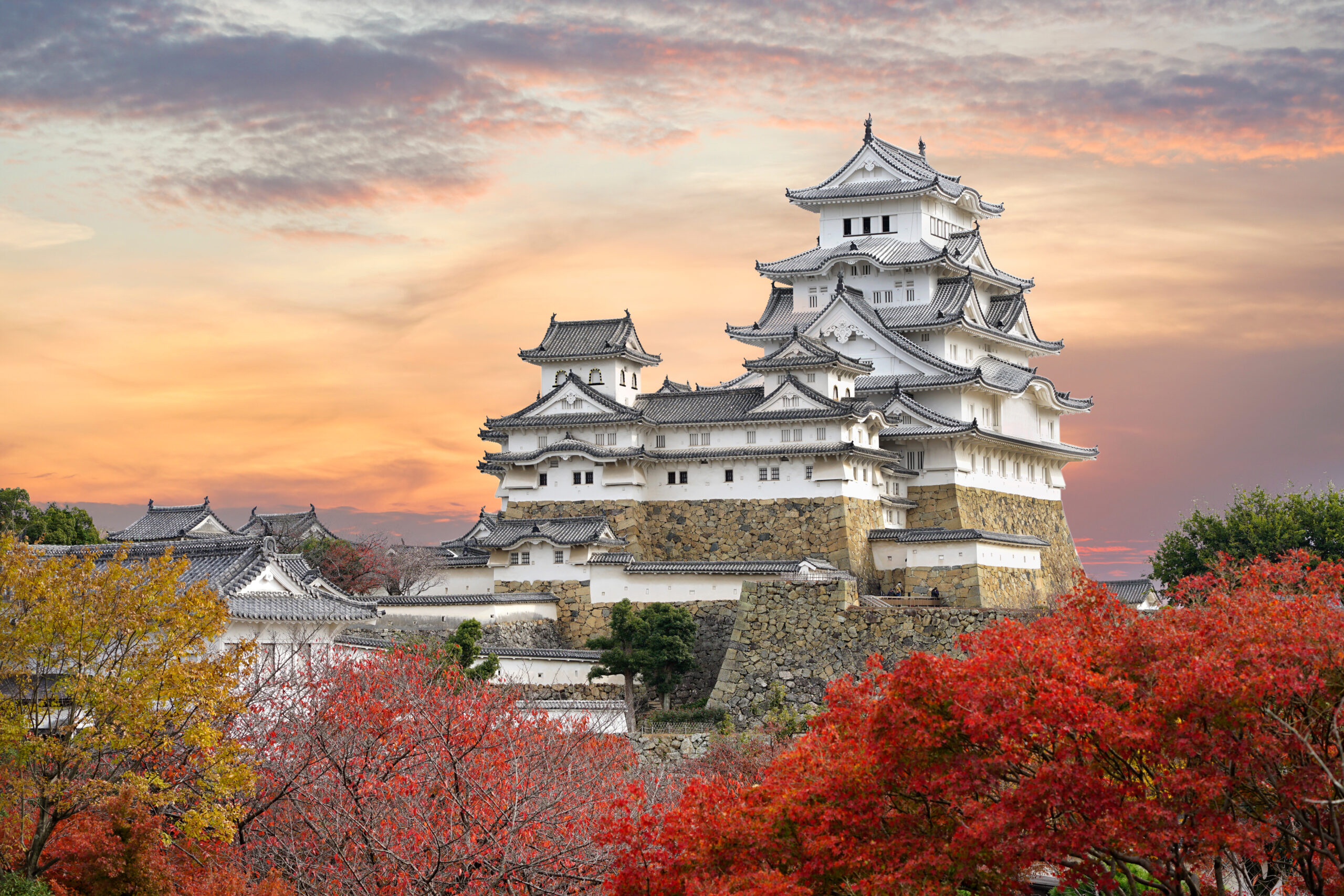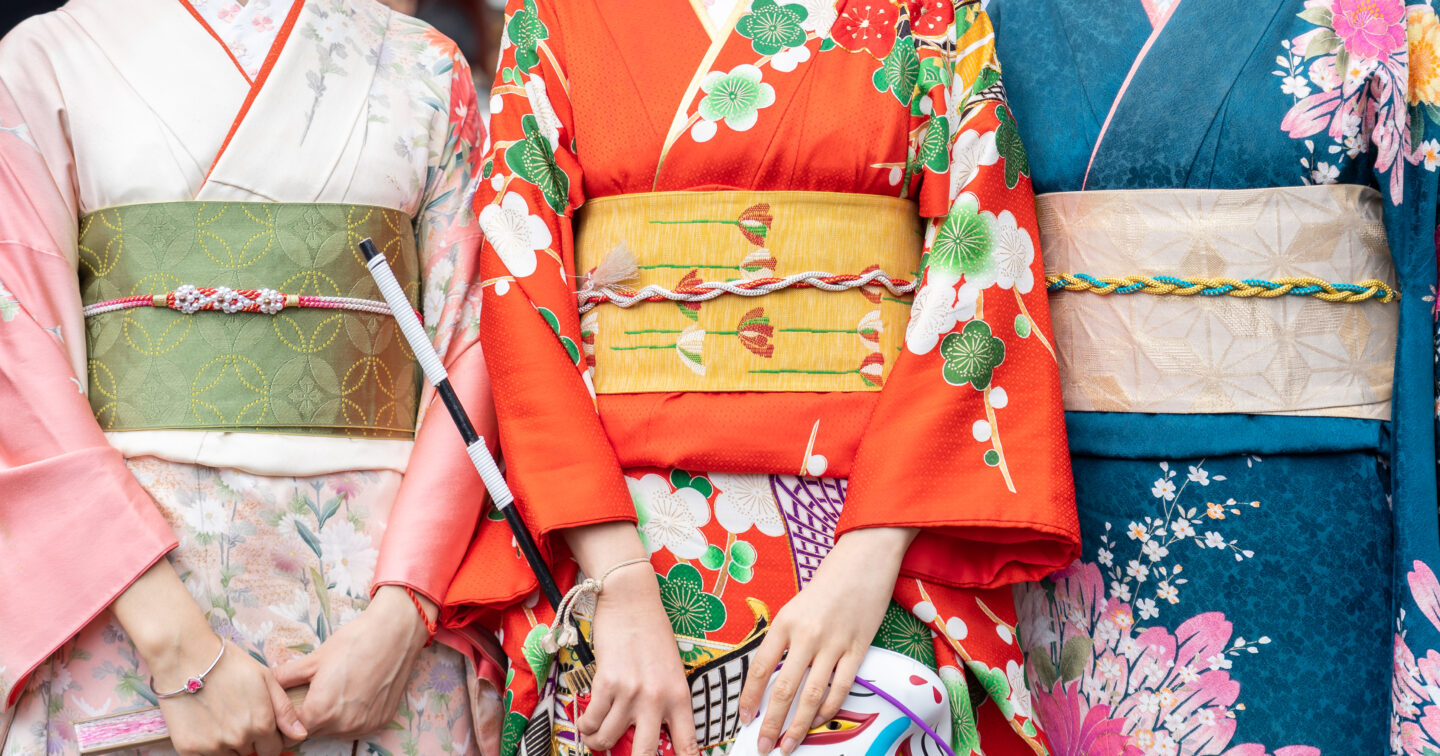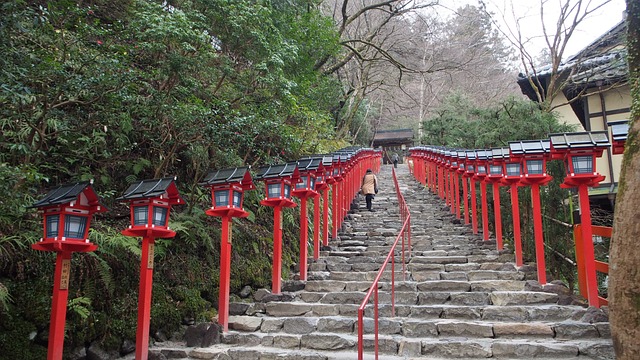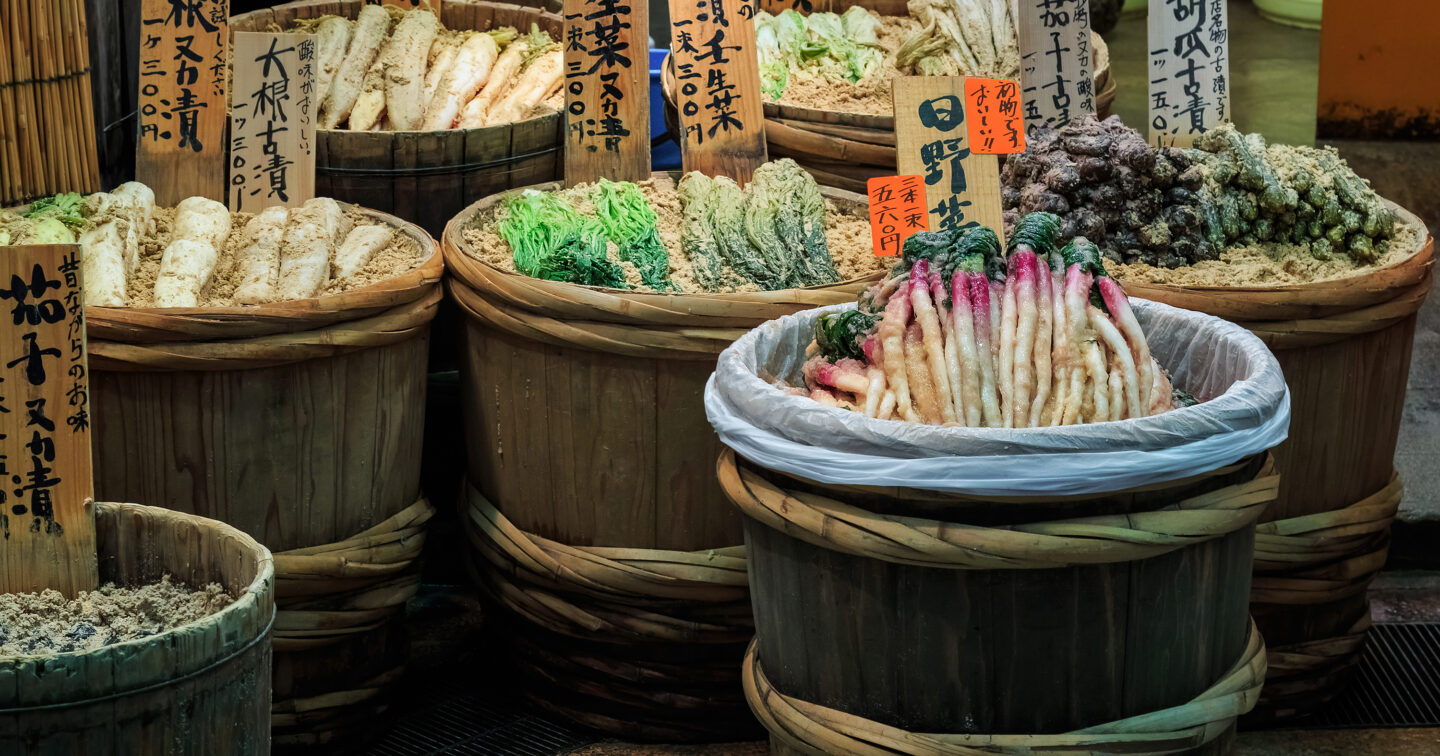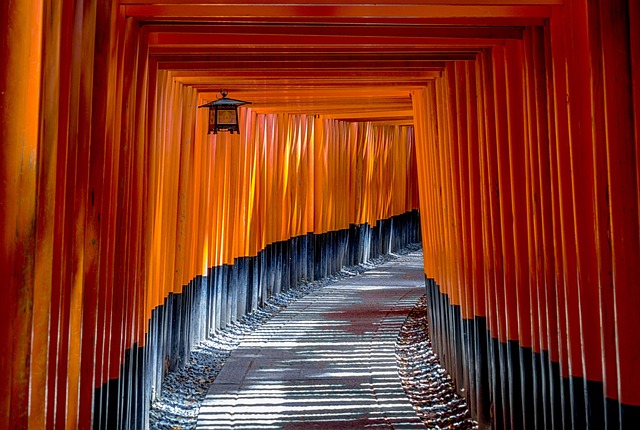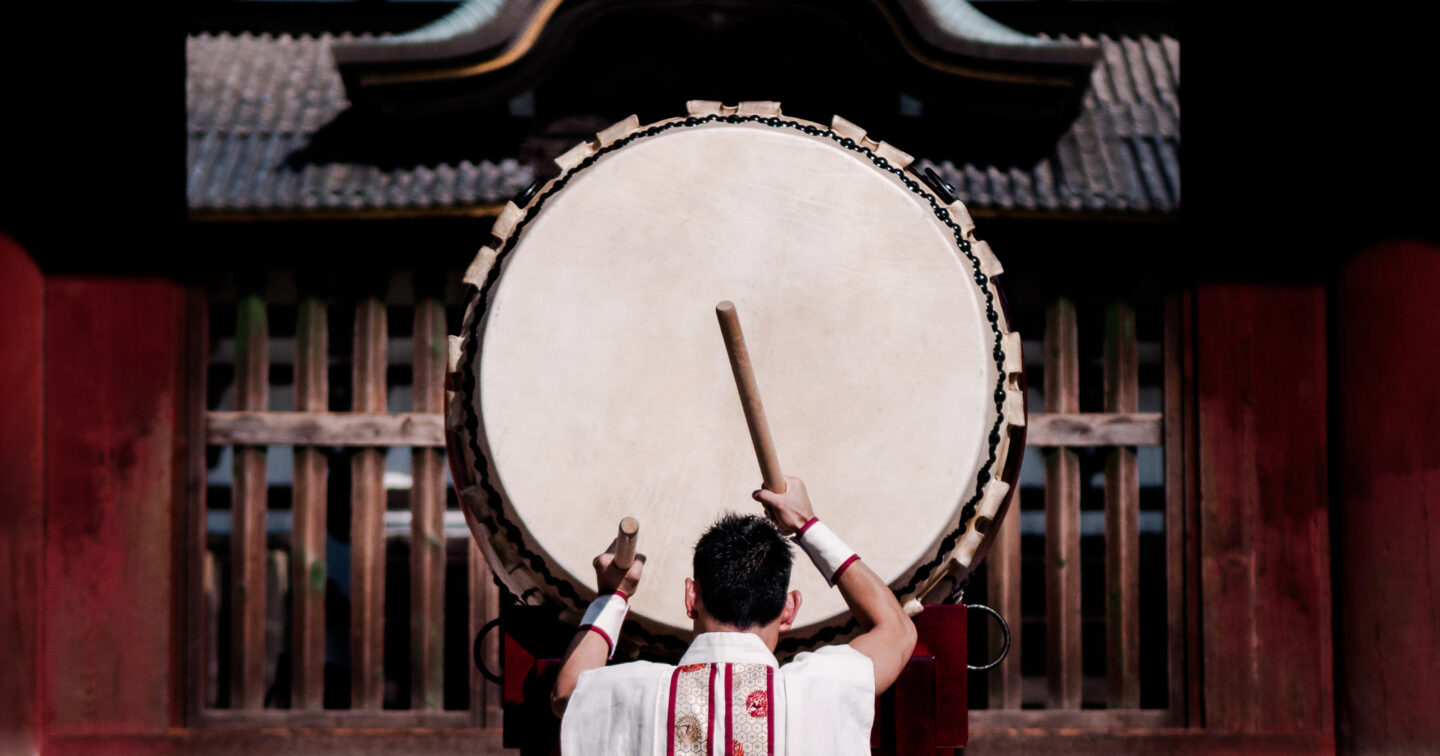September 19: Depart the U.S.
September 20: Tokyo
D
- Arrive in Tokyo and transfer to the Mitsui Garden Hotel Ginza Premier.
- Meet fellow travelers at a welcome dinner this evening near the hotel.
September 21: Tokyo
B,L,D
- Begin the day meeting with Mr. Noah Sneider, Tokyo Bureau Chief for the Economist who covers Japanese politics, business, society, and culture. Before joining The Economist, he reported for publications including The New York Times, Harper’s, and The Atlantic, among others. He is the third generation in his family to live and work in Japan.
- Walk to the subway and travel to Asakusa station. Upon arrival begin a walking tour along Nakamise-dori Street to the very heart of Asakusa, Senso-ji Temple, Tokyo’s oldest temple. As you get close to the Hozomon gate and Senso-ji Temple, admire the unusual decorations: a pair of ōwaraji, or giant straw sandals that measure 14.5 feet tall.It is said that the sandals represent the powers of Niō, the Herculean guardians of Buddhist temples, meant to keep demons at bay by making them believe that the temple is home to an invincible giant.
- Explore the temple before walking a few minutes to lunch at the Farm café, which offers beautiful plant-based cuisine.
- After lunch walk 10 minutes to Taro’s Origami studio. The earliest records of origami in Japan date to the Heian Period (794-1185). It was during this period that Japan's nobility had its golden age, and it was a time of great artistic and cultural advances. Paper was folded into set shapes for ceremonial occasions, a custom which can still be seen in every shrine to this day. Meeting the group will be David Koichiro Silvert, who was born in Japan, grew up in California and recently returned to Tokyo to live.
- Walk nearby to the Asakusa pier and board a boat for a relaxing ride along the Sumida River with an opportunity to admire Tokyo’s sleek skyline. Disembark the boat at the Hama Rikyu gardens, a tranquil oasis in the heart of Tokyo. Walk through these scenic gardens which were once reserved for Imperial use and were only opened to the public in 1946. Stop at a tea house to enjoy a soothing cup of green tea and a traditional Japanese sweet.
- Continue walking to a small kimono shop run by Ms. Mie Chitani, whose family has been running a kimono store in Ginza since the first year of the Meiji era. Mie Chitani will meet the group and talk about her design work.
- Dinner tonight is at a local restaurant.
September 22: Tokyo
B,L
- Depart the hotel and travel by public transportation to Ozu Washi, established as a paper wholesale store in 1653. Today, Ozu Washi houses a museum, a gallery, a shop, and a handmade Washi experience. Washi paper is one of Japan’s most fundamental, and often overlooked, artistic products and one of UNESCO’s Intangible Cultural Heritage objects.
- Enjoy lunch at the Avatar Robot Cafe DAWN . The café is a service operated by Ory Laboratory Co., Ltd., where employees who are unable to go outside of their homes remotely operate avatar robots. The company aims to create a new form of social participation for those with mobility challenges to be able to work and connect with others through technology. We have asked Mr. Yoshifuji Ory to join us; he is the developer of OriHime and the CEO of Ory Laboratory.
- After lunch visit the Meiji-jingū Shrine, one of Tokyo’s most important shrines. The Meiji-jingū covers 175 acres and houses over 100,000 trees – making it a lush escape from the hard angles of the city.
- End the day meeting with a representative from the Liberal Democratic Party. This is the Prime Minister’s party, frequently abbreviated to LDP. The LDP has been in power almost continuously since its foundation in 1955. The LDP is often described as a big tent conservative party, with several different ideological factions.
- Dinner tonight is on your own.
September 23: Kanazawa
B,L,D
- This morning meet with Gon Matsunaka, founder and former president of the Pride House Tokyo and director of the Marriage for All movement in Japan. A former advertising executive for one of Japan’s top firms, Dentsu, Mr Matsunaka hid his sexuality for decades. He came out as gay in 2010 and opened Pride House to provide a community center in Tokyo.
- Travel by public transportation to the Nezu Museum, which houses magnificent examples of Japanese painting, calligraphy and ceramics, some of which are registered National Treasures.
- At midday take a bullet train to Kanazawa. This incredible train is an amazing experience in itself –travelling so smoothly at such a speed. Located between the Sea of Japan/East Sea and the Japanese Alps in western Japan, Kanazawa was spared from destruction during World War II and remains one of the best-preserved castle towns of the Edo Period. It is considered one of the country’s best places to learn about samurai’s history and lifestyle. Lunch will be enroute.
- Arrive at the Kanazawa Station. The station’s wooden hand-drum-shaped Tsuzumi Gate and glass umbrella-shaped Motenashi Dome were controversial at first but have come to be appreciated by many. Our hotel, Hotel Nikko Kanazawa, is located just a few minutes by foot from the train station.
- In the late afternoon explore the neighborhood of Higashi Chaya. Walk through a labyrinth of teahouses, temples, beautiful, latticed buildings, and restored samurai houses. Admire the roofs of the stately wood buildings with detailed carvings sprouting from clusters of gingko and maple trees. Kanazawa’s streets were partly designed to mislead and disorient outsiders.
- Dinner tonight is in the old town.
September 24: Kanazawa
B,L
- This morning head south to visit Shirakawa-go and Gokayama, two scenic and secluded mountain village areas famous for their traditional architecture and designated UNESCO World Heritage sites.
- The villages are famed for their magnificent A-frame farmhouses, built in a style called gassho-zukuri, or "hands in prayer." Extended families of 30 or more members lived on the lower floors, while the upper floors were used to raise silkworms, which, especially in the Meiji era, provided the raw silk that fed Japan's booming textile mills.
- After exploring the two towns return to Kanazawa to explore the Nagamachi district. This was a samurai district located at the foot of the former Kanazawa Castle. The area preserves a historic atmosphere with its remaining residences, earthen walls, private entrance gates, narrow lanes, and water canals.
- Enjoy lunch at a local restaurant before visiting the Nomura Family Samurai House, which once belonged to the Nomuras, a wealthy samurai family. Although many of the samurai houses were destroyed after feudal Japan came to an end in the late 1800s, the Nomura Family Samurai house fell under the hands of a rich businessman and, although altered, was preserved. The Japanese garden on the premises is acclaimed for its refined ambience.
- Enjoy the remainder of the day at leisure.
September 25: Hiroshima
B,L,D
- This morning depart by bullet train for Hiroshima and enjoy lunch enroute.
- Rebuilt after the war, Hiroshima is a modern city, but the Atomic Dome and Peace Park, which we will visit today, are a poignant reminder of the city’s tragic past, as are the swarms of origami cranes left by school children as symbols of peace. At 8:15 on August 6, 1945, the first Atomic Bomb used in warfare was detonated over the city of Hiroshima. The resulting devastation has caused the city to become a center for both anti-nuclear and anti-war efforts.
- The Peace Park Memorial is an extremely moving place to visit and will allow an opportunity to contemplate the enormity of what the park represents not just to Hiroshima but to the world’s own future.
- Overnight at the Sheraton Hiroshima. Dinner tonight is at a local restaurant.
September 26: Kyoto
B,L,D
- Take the bullet train this morning to Himeji and visit the famous Himeji castle. The most impressive of Japan’s scant dozen original castles, Himeji-jo is also known as the “white egret castle” or the “white heron castle” for its stately white walls.
- After the visit, take another bullet train to Kyoto, and on arrival transfer to the Cross Hotel, where inside a modern interior, there is an atmosphere of ancient culture. Lunch is enroute.
- This evening hear from a guest speaker who will discuss the history, culture and language of Japan with a focus on Kyoto, before dinner at the hotel.
September 27: Kyoto
B,L
- This morning meet with staff at the Kyoto-based NGO, Kiko (Climate) Network. We have requested a meeting with Kenro Taura, executive director. Kiko Network is a non-governmental, non-profit organization in Japan that focuses on putting together policy proposals for climate change prevention at the community level and beyond, disseminating information, and engaging in environmental education and training.
- After the meeting visit the Nishiki Market, “the Kitchen of Kyoto”, which dates back to the 14th century; you’ll finds all the ingredients of traditional Kyoto cuisine on display here! The market has been operating for over 400 years and covers five narrow long blocks with over 125 stalls.
- At the other end of the market visit the Nishiki Tenmangū Shrine, a Shinto shrine dedicated to the deity Tenjin. Despite its small size, Nishiki Tenmangū is considered one of the preeminent Tenjin shrines.
- After a light lunch visit Ryoan-ji, considered the supreme example of an abstract Zen Garden.
- Drive across the Kamo River to the Matsui Brewery for a sake tasting. Founded in the 11th year of Emperor Kyoho (1726), the brewery continues to brew sake today.
- Enjoy the remainder of the day at leisure.
September 28: Kyoto
B
- Enjoy an early morning stroll along the Philosopher’s Walk, a pretty path bordering a canal, as far as Ginkaku-ji, the Silver Pavilion built for Ashikaga Yoshimasa in 1482. The Pavilion is filled with painting collected over a lifetime and a hub for all the different arts inspired by Zen.
- Continue on to the I. M. Pei designed Miho Museum, which stands deep in forested hills and showcases works from ancient civilizations including the Egyptians, Romans, and various Asian cultures.
- Return to Kyoto for a free evening.
September 29: Koyasan
B,L,D
- This morning, schedule permitting, meet with Mr. Pico Iyer, renowned writer and publisher of 15 books on subjects ranging from the Dalai Lama to globalism, from the Cuban Revolution to Islamic mysticism.. He also writes up to 100 articles a year for Time, The New York Times, The New York Review of Books, Financial Times, and more than 250 other periodicals worldwide. His four talks for TED have received more than 10 million views. Since 1992 he has spent much of his time at a Benedictine hermitage in Big Sur, California, and most of the rest in suburban Japan near Nara.
- After the meeting depart by bus for Koyasan, a three-hour drive. En route stop at the Fushimi Shrine with its thousand red torii gates donated by worshippers. The shrine was featured in the Hollywood movie "Memoirs of a Geisha".
- Upon arrival at Mt. Koya, transfer to the Ekoin Monastery (standard Japanese room with shared bath and toilet). This monastery with its1200-year history dates back to Kobo Daishi Kukai, who built a five-story pagoda and enshrined Bishamonten and Fudo Myoo. Our time here will allow an opportunity to learn about the monastic traditions of Koyasan and the daily life of a monk. Accommodations at the Monastery are simple and toilet facilities are shared.
- Enjoy lunch followed by a walking tour through the sacred area of Mt. Koya. Return to Ekoin Monastery in the late afternoon and enjoy a Shojin (vegetarian) dinner tonight.
- After dinner meet for a night tour to Okunoin Temple which gives you an opportunity to visit when it is atmospheric with lighted lanterns on the approach and flying squirrels, big frogs and fireflies fill the sky.
- Return to the monastery.
September 30: Osaka
B,L,D
- Early this morning join the resident monks in a religious service held in the main hall.
- After breakfast depart for Nara, about two hours away. Nara is the ancient capital of Japan and the Imperial family ruled the country from here between 710 and 794. Upon arrival visit the Kasuga Shrine which was originally the royal shrine of the powerful Fujiwara family. After visit Todai-ji (Great Eastern Temple), one of Japan's most famous and historically significant temples and a landmark of Nara. Enjoy a walk through Nara Park where wild deer, considered the messengers of Gods, roam.
- Lunch is at a local restaurant before departing for the lively metropolis and street food capital of Japan, Osaka.
- Upon arrival transfer to the Zentis Osaka Hotel, a lovely new boutique hotel.
- Attend a meeting (pending availability) with Mr. Chris Page, a freelance writer who has been living and working in Japan since 1989. From 2001 to 2012 he was the editor of Kansai Scene magazine, has contributed to TalkRadio, the BBC World Service, CBC TV News (Canada), The Japan Times, The London News Review, and many other publications. Chris will talk about the Osaka-based Japan Innovation Party (Nippon Ishin no Kai) which has emerged as a rising force in Japanese politics since October 2021, when it captured four times more seats than it held prior to the election.
- End the day with a walking food tour with a local guide for dinner. Explore five hidden eateries where you will be trying ten different dishes.
October 1: Osaka
B,D
- This morning, pending availability, meet with Mr. Kenzo Tomonaga, Chief Director of the Buraku Liberation and Human Rights Research Institute (BLHRRI) and Mr. Masahiko Tanikawa, President of the Buraku Liberation League to speak with the group about the largest discriminated-against population in Japan. They are a caste-like minority among the ethnic Japanese and face discrimination because of an association with work once considered impure, such as butchering animals or tanning leather.
- After our discussion enjoy a taiko drum performance. In taiko history, there is a conscious disassociation of the production of the taiko, where handling of leather is considered ‘spiritually impure’, from the performance, which is often associated with ‘purifying’ religious rituals.
- Enjoy the afternoon at leisure before attending tonight’s farewell dinner.
October 2: Depart for flights home
B
- There will be one group transfer to Osaka international airport for return flights home.
Trip Price
Per person double occupancy: $9,250
Single supplement: $1,640
Included
- Accommodation in hotels as listed based on double occupancy
- Meals as listed in the program with wine at the welcome and farewell dinners
- A combination of public transportation and private bus in Tokyo, Kyoto and Osaka
- In Kanazawa, Hiroshima and Koyasan, transportation will be in a private bus
- Train tickets in tourist class seats
- Transportation of luggage by courier service on days when the group take trains
- All sightseeing, activities and speakers (subject to their schedules) as listed
- Airport transfers will be by the ticketed limo transportation in Tokyo and Osaka
- Water on the bus
- The services of a local Japanese guide who will travel with the group throughout
- The services of a Distant Horizons tour manager who will travel with the group throughout
- Basic gratuity to guide, drivers and tour manager
Not Included
- International airdare to Tokyo and from Osaka
- Any meals not listed
- Drinks with meals
- Trip insurance
- Items of a purely personal nature
- Any item not listed

